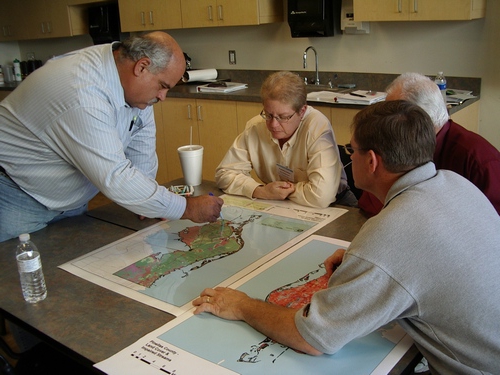In normal civil circulation, not only recognition of civil rights by subjects is provided. Along with this, their reliable legal protection is provided. According to the tradition that has developed in science, the concept of "civil protection of property rights" covers the whole range of measures that are aimed at the normal process of realizing the capabilities of people associated with the circulation of property. Next, we consider how legal protection is provided in this area. 
General information
Like any other subjective law protection of property contains, on the one hand, the ability to perform personal positive actions by a person, and on the other, to require certain behavior from the obligated person. Providing legal protection is carried out in the manner prescribed by law. This means that special means, norms and methods of protecting property rights are used.
Jurisdictional form of collateral
It represents a set of coordinated organizational measures by which the protection of property rights in the Russian Federation is carried out. The jurisdictional form is presented in the form of activities of bodies authorized by the state. Under this form, property rights are protected in court. It is carried out according to general rules. Judicial protection of property rights is carried out by arbitration, arbitration authorized bodies, as well as instances of general competence. As the main tool, with the help of which the defense of one’s interests is carried out, a lawsuit acts. It represents a claim addressed, on the one hand, to an authorized instance, and on the other, to a defendant.
Protection methods property rights and property interest
They are given in Art. 12 GK. The list includes:
- Recognition of the law.
- Coercion to perform duties in kind.
- The restoration of the situation that existed before the violation of interests and the suppression of behavior that infringes on the right or creates such a threat.
- Indemnification.
- Self-defense of law.
- Recognition of invalidity of an act of a territorial or state authority.
- Recovery of forfeit.
- Compensation for harm.
- Confession disputed transactions void and void, applying the consequences of this.
- Change or termination of legal relations.
- Non-application by a court of acts of a territorial or state authority inconsistent with legislation.
In addition, the use of other methods is allowed, if so stipulated by law. 
Vindication Claim
With its help, property protection of property rights is carried out. Vindication claim is considered one of the most important tools, the use of which ensures the protection of the interests of the property owner. Its essence is to recover his belongings from illegal someone else's order. This provision is established in Art. 301 GK.
Object and subject of regulation: general information
As it acts individually defined property. In this regard, the protection of property rights ultimately boils down to ensuring the ability of the owner to exercise the powers of disposal, use, ownership in relation to a particular object belonging to him by law. In this case, it is necessary to take into account a certain nuance. Protecting property rights is different from securing property interests. The latter can be carried out in different ways.For example, this may be a requirement to recognize the invalidity of the transaction, compensation for losses, and so on. Direct protection of property rights is carried out by methods that are applicable to an individually defined object. It is these techniques that make up the subject of regulation.
The essence of the lawsuit
Such a claim is presented by the non-owner to the non-owner who illegally owns the property of the former. The essence of the lawsuit is to seize the object in kind. A vindication claim protects property rights in general. That is, the requirements are aimed at restoring all opportunities. It is presented in cases when there is a violation of the right to dispose, use and possess at the same time. The immediate owner is temporarily deprived of the opportunity to exercise all his powers, but at the same time he retains the right of ownership. It acts as the basis for a claim for the seizure of an object belonging to him by law from another person. 
Important point
As mentioned above, the object of vindication is always an individually defined thing that has been preserved in kind. Due to the fact that the content of the claim does not constitute a requirement to replace one item with another of the same quality and kind, but to restore ownership of a specific specified item, there are a number of restrictions. In particular, such a statement is not allowed to be presented regarding things related only by descent or not preserved in kind. For example, when the controversial building was overhauled, but not just repaired by the new owner. In the absence of a vindication item, only legal requirements for damages can be presented.
Acquisitive prescription
This institution is of particular importance in the protection of property rights. However, it should be noted that until recently, the legislation did not know about its existence. In this regard, the refusal to return the item beyond the pass of the limitation period did not act as the basis for the emergence of the right of ownership of the illegal owner.
Property of this kind was to be recognized as ownerless. It passed into the ownership of the state by judicial decision. This order was determined in Art. 143 Civil Code (as amended in 1964). In 2010, the Plenum on the protection of the property rights of the Armed Forces was held. It discussed the new provisions of the Civil Code. The decree on the protection of property rights contains clarifications to the law. In particular, this also applies to the institution of acquisitive prescription. Today, the law states that an organization or individual who is not the owner of real estate, but at the same time openly and conscientiously own it continuously as his own for 15 years, and others - for 5, can acquire the right to obtain these objects in own. This provision is established in Art. 234, part 1 of the Civil Code. 
Limited vindication
In the question of the protection of property rights, article 302 of the Civil Code is of great importance. She secures the exemption in accordance with the general rule provided for in Art. 301, while determining cases of exclusion. Art. 302 stipulates situations when it is impossible to demand the return of their property from illegal possession of others. Moreover, in such cases, the original owner ceases, and for the new owner, the ownership of the disputed object arises.
The exceptions, in particular, are situations where, in addition to the interests of the first owner itself, there are others that deserve attention, which belong, in particular, to a bona fide purchaser. Protection of property rights is based on the principle of limited vindication. The legislator, in other words, gives preference to a bona fide acquirer who paid property for purchase from the owner who could not alienate it. 
Negative lawsuit
In Art. 304 of the Civil Code says that the owner can demand the elimination of any violations of his rights, even if they do not accompany the deprivation of ownership. Such situations concern two possibilities given by law. These include, in particular, the right to dispose and use. Challenging their violations is carried out through a negative claim. An example is the debate on the implementation of the rights of persons owning neighboring land and buildings.
In particular, one of them by his actions can create obstacles to another person for the normal use of their capabilities (constructs a building that obscures plants). Together with the presentation of the requirement to remove existing obstacles, the statement of claim may be aimed at preventing a possible violation of property rights if there are obvious prerequisites for this. For example, a person can ban the construction of a building at the design stage if it creates obstacles to the normal use of property.
Subject
It is the owner who keeps the property in his possession. The offender who acts illegally will become the subject of the obligation. If obstacles to the exercise of the rights of the owner are created as a result of lawful actions, then a negative claim cannot be brought. For example, it may be the laying of a trench near the house by agreement of the relevant authorities. In this case, one will either have to challenge the compliance of these actions with the law (but not using a negative claim) or come to terms with the consequences. 
Specificity
It should be said that negative and vindication claims can be brought not only directly by the owners, but also by owners of other rights to one or another property. It can be any legal owners. These include subjects:
- Property Rights:
- perpetual inherited possession;
- operational management;
- economic management and other things.
- Obligatory rights regarding the ownership of another person’s property. It can be carriers, custodians, tenants and so on.
Wherein title owners (legal), which possess property under a contract or law, it is possible to protect the right of ownership even against the owner. In this regard, acting as the subject of these relations, unitary enterprise for example, it may claim property from the founder in case of unlawful seizure, the lessee - present claims to the landlord who is trying to illegally deprive him of tenure before the contract expires by shutting off heating, electricity and creating other obstacles to normal activities. 
Recognition of law
In addition to negative and vindication claims, there is one more. With its help, quite often intellectual property rights are protected. In practice, the most common such disputes regarding inheritance, common property of spouses. A claim for recognition of the right may also be directed to third parties. They may not be associated with any legal ties. For example, this may be the owner’s demand to secure ownership of him, in connection with the refusal of local administrative authorities to issue him documents of title due to their absence or untimely execution.
In this case, the subject of the dispute should be clearly understood. The owner, filing such a lawsuit, does not require the return of the thing directly, but asks to recognize his right to it. This is especially true in matters of authorship. For example, a person asks to recognize his ownership of a work of art, painting, invention and other results of his intellectual activity. As for the nature of such a lawsuit, there is no consensus on this issue today.Some researchers consider it to be a type of negative, while others consider it a kind of vindication requirement. Third experts believe that such a claim is separate, not related to the above statements.
